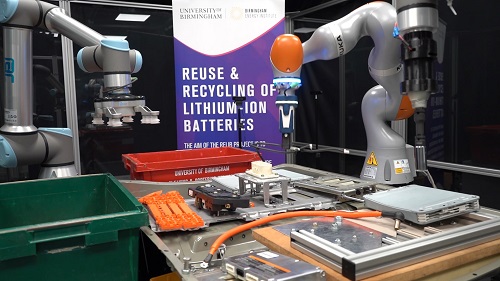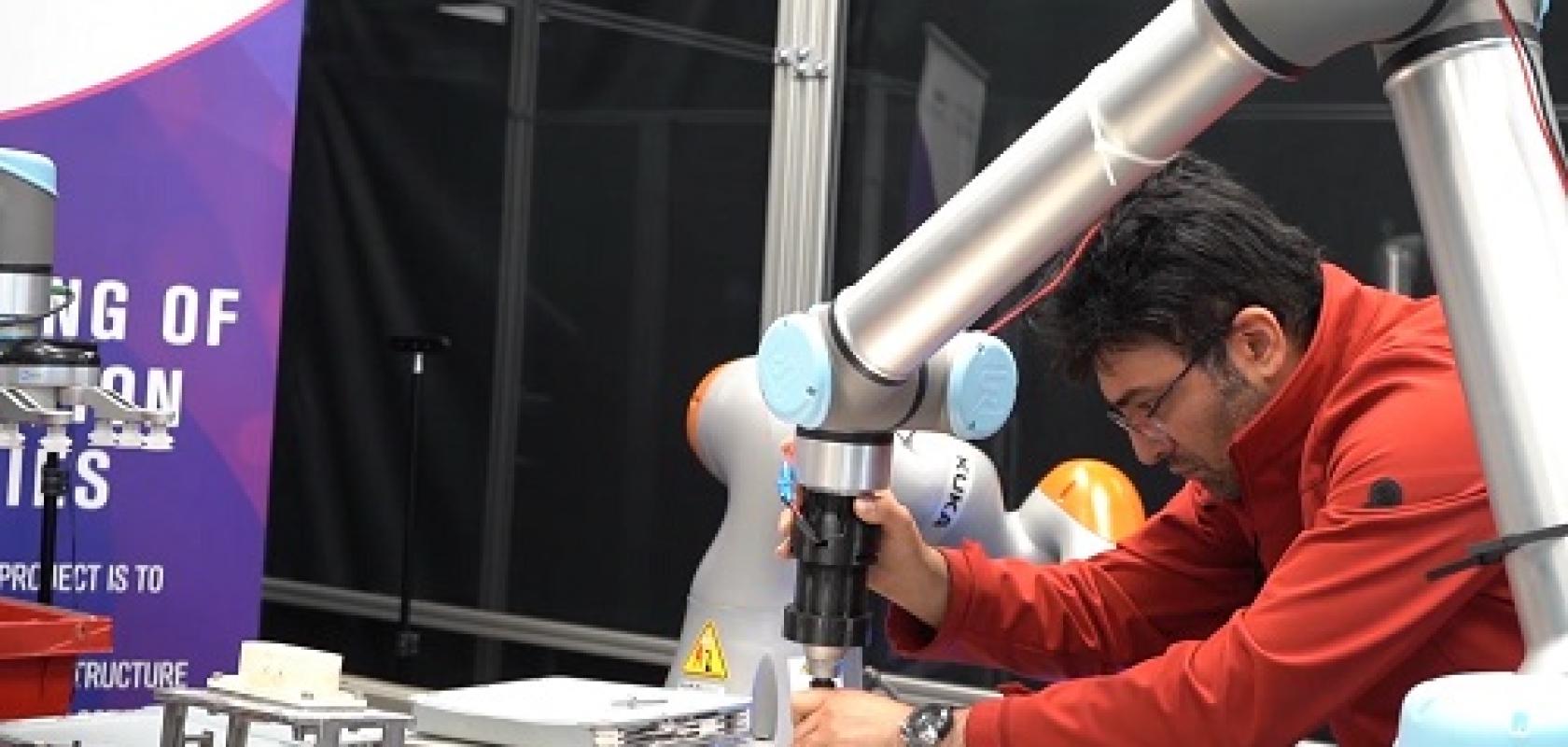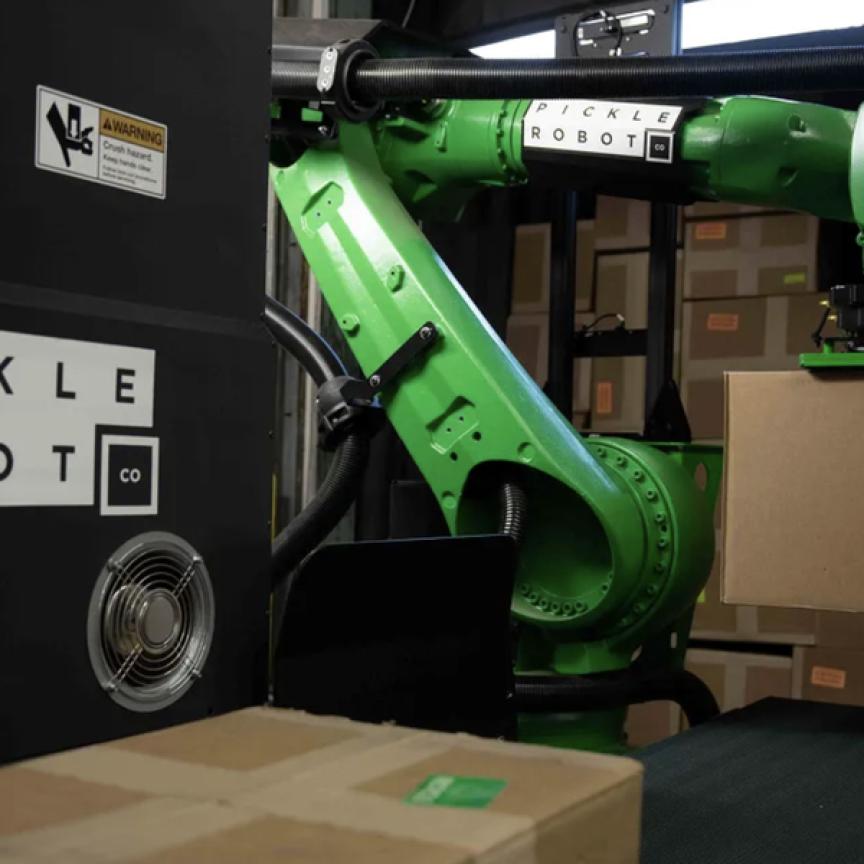By 2030 no new petrol or diesel vehicles will be sold in the UK, with sales of hybrid vehicles stopping in 2035. The RAC in the UK estimates there are almost 400,000 battery electric vehicles on the UK’s roads at the moment, and a little over 300,000 plug-in hybrid electric vehicles.
The switch to electric vehicles is happening all over the world as countries put in place measures to curb their greenhouse gas emissions. Around 2.5 megatonnes of new batteries are expected to be produced in the EU by 2030 according to the Fraunhofer Institute for Systems and Innovation Research (ISI), which conducted a study into the opportunities and challenges for mechanical engineering for recycling lithium-ion batteries. The study was commissioned by the Impuls Foundation of the VDMA.
In Europe, the volume of end-of-life lithium-ion batteries and battery components to be recycled could amount to around 230 kilotons per year from 2030, and around 1,500 kilotons per year from 2040, the Fraunhofer ISI report found.
In a statement, Dr Christoph Neef, who coordinated the study at Fraunhofer ISI, said: ‘In order to be able to handle such recycling volumes, recycling capacities, which are currently still in the low double-digit kiloton range per year in Europe, must be significantly expanded. This will require plant technology in Europe that, depending on the speed of market growth and the global share of European recycling capacities, will require investments of around €6.6 billion by 2040.’ For the year 2040, this corresponds to a European market size of about €810 million for new system technology, according to Fraunhofer ISI.
In the UK, the Faraday Institution has funded the Relib project – one of the first it funded in 2018 – investigating reuse and recycling of lithium-ion batteries. One of the work packages, specifically looking at automating the process of testing, disassembly and sorting, uses advanced robotics, machine vision and AI techniques. Dr Alireza Rastegarpanah, a Faraday Institution Research Fellow and a researcher at the University of Birmingham’s Extreme Robotics Lab, told Imaging and Machine Vision Europe: ‘There are some technical challenges related to robotic battery disassembly that could be solved using machine vision techniques.’
As part of Relib, a team of roboticists led by Dr Rastegarpanah is using machine vision and machine learning techniques to compile a dataset of the components that make up the batteries used by different car manufacturers. The challenge for building an automated system for taking batteries apart, according to Rastegarpanah, is that there’s no standard in battery design, and also there’s a lack of information about battery design from the manufacturers.
Rastegarpanah explained that, in battery disassembly, detecting and localising battery components for vision-guided manipulation tasks could be challenging if CAD model of the objects are not available, or if the battery is damaged and doesn’t match with the original CAD files.
One of the batteries the Relib team is focusing on is that used in the Nissan Leaf. The battery pack for the 2012 model has 48 modules connected in three stacks, with the stacks covered in metal casings which in turn are covered in plastic. For Jaguar Land Rover, the type of battery and its makeup is completely different, explained Rastegarpanah – the way the modules are stacked is different; JLR puts modules in boxes and then welds around that. ‘From an assembly point of view, this might be easy, and it’s safe and is a nice design,’ Rastegarpanah said. ‘But from a disassembly point of view, if you are going to use welding… are we still able to extract the modules safely and do the testing? These are all the questions that have to be answered, and it comes back to the manufacturer – they have to standardise these processes.’
The Relib team is using high-resolution 3D scanners, including Artec Eva and Spider scanners, to create a 3D model of a battery as it is taken apart manually, layer by layer, to understand how it was assembled. The resulting CAD model will be used as a baseline, to compare a damaged battery with the CAD model, for instance.
The main reason for disassembly is to reuse healthy modules, or to recover critical materials. Rastegarpanah explained that most salvage centres will send faulty batteries – from a car accident, for instance – straight to the shredder and then separate the material, rather than testing the battery pack and removing the faulty modules.
‘Sometimes, in traffic accidents, only one of the modules is damaged and the rest is fine,’ he said. ‘So it can be repurposed for its second life as a car battery, or it can be used for other applications like solar panels or energy storage systems.’
Batteries usually reach end-of-life at 70 to 80 per cent state-of-charge. ‘At the moment, end-of-life batteries are not recertified and an appropriate testing framework is needed to test end-of-life batteries,’ Rastegarpanah said.
The robotics team at the Relib project is developing vision-guided manipulation techniques as part of the disassembly process, and for this they are using RGB-D cameras like the Ensenso camera from IDS. The RGB-D images are used for robot path planning, object detection, object tracking and localising the object in a scene. Rastegarpanah said that, detecting and localising partially viewed shiny industrial objects in cluttered environment is sometimes challenging. ‘These issues can lead to some degrees of error for the vision system,’ he said.
One of the disassembly tasks is to use a robot to make cuts in the module casing. ‘We’ve developed a method to find the area of interest based on the depth image,’ explained Rastegarpanah. ‘Then, based on that, we make a tangential on the surface and then angle the cutter perpendicular to the surface in order to make the cuts.’
‘Disassembly is a very complex, challenging task,’ he continued. ‘It requires a consortium of different universities, experts and manufacturers sitting together and looking at the problem from different angles – looking at how we should standardise disassembly, for example, how we should use vision, how we should use robot manipulation.’
He added that, currently, there’s not a general method of disassembly because of the variety in battery designs, but that Relib researchers are working to automate some standard, fundamental tasks, such as unbolting. Bolts and screws used in electric vehicle batteries come in different sizes and shapes, and Rastegarpanah has developed a vision-tactile-based method to generalise the process of unbolting.

Battery disassembly using cobots. Credit: Dr Alireza Rastegarpanah
The initial Relib project began in 2018 and was funded for three years; now the project has received a two-year extension. What was developed at the University of Birmingham’s Extreme Robotics Lab in the first phase of Relib will now be moved to an industrial environment to operate at scale at Tyseley Energy Park. Here, the engineers will use industrial Kuka robots to work with battery backs.
The lifespan of an electric vehicle battery is around eight years; Tesla’s battery warranty lasts for eight years and varies in mileage between models. Some of the electric vehicle batteries in circulation today in the UK and elsewhere are reaching the end of their life already. ‘We will be faced with lots of waste material from EV batteries very soon,’ Rastegarpanah warned. ‘There should be infrastructure; there should be some way to handle these waste materials. It would be very useful if we could find a way to reuse it for energy storage, for instance.’
‘There’s also a lack of regulation in the UK,’ he continued. ‘We are working with policy makers and we are proposing what could be done to simplify that process.’


